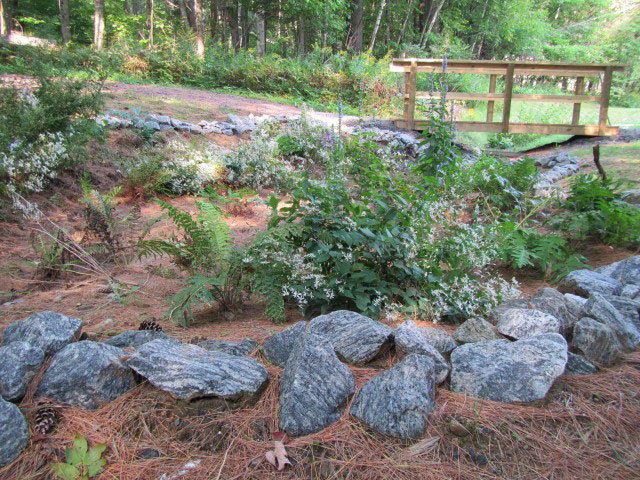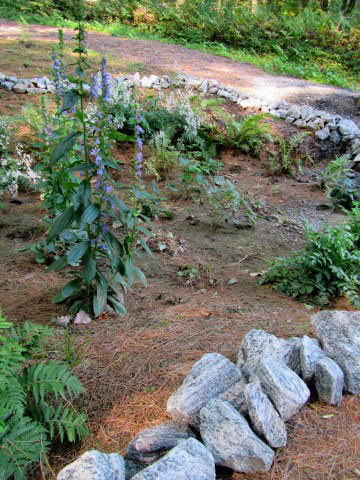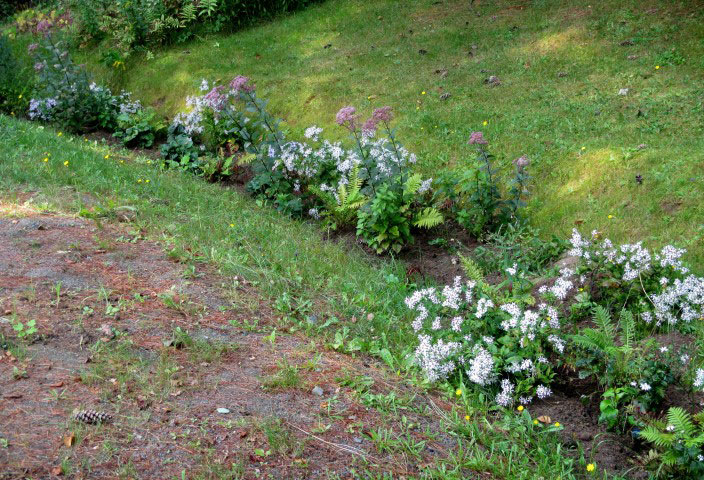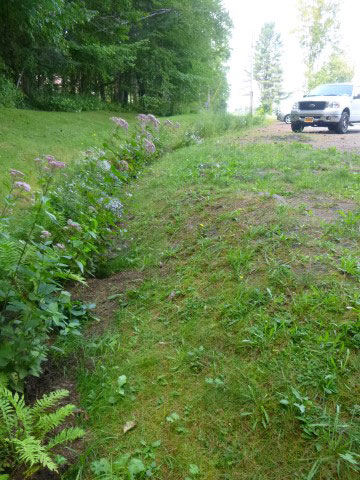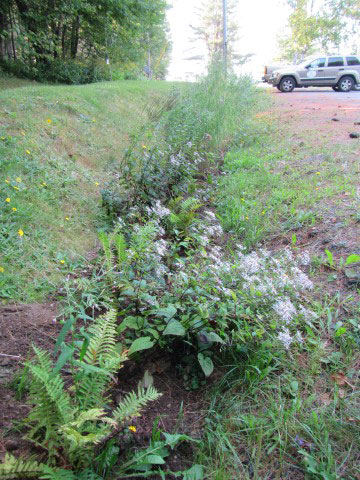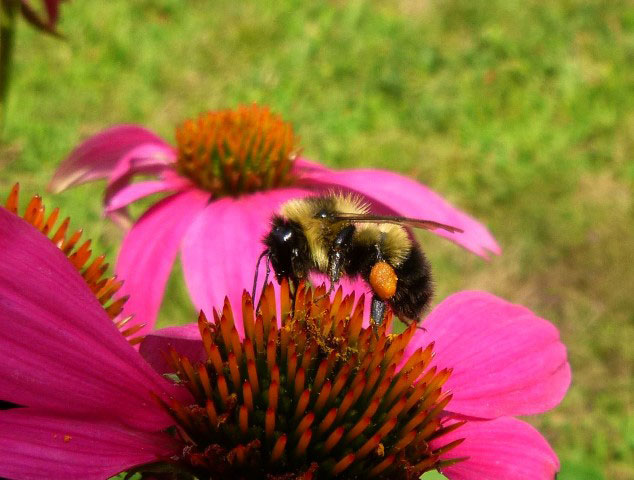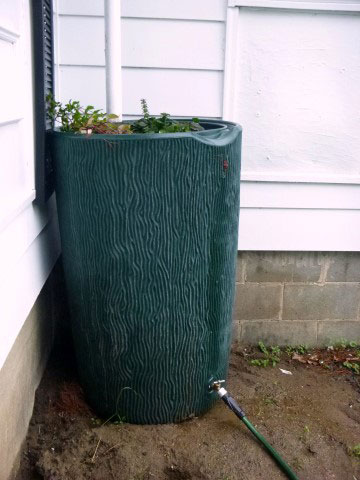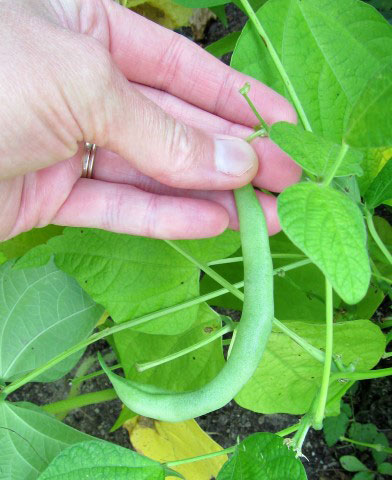Landowner and Municpal Services
Quick Links
Landowner and
Municipal Services
District staff provide consultation to landowners and municipalities to protect water quality.
- Green infrastructure
- Stormwater pollution prevention
- Shoreline buffers
- Specialized lake monitoring upon request
Stormwater Control and Green
Infrastructure Innovation Project
The Stormwater Control and Green Infrastructure Innovation Project maintains the integrity of water quality in Hamilton County by addressing stormwater issues at Arrowhead Park, Town of Inlet. Partners installed TRUEGRID® PRO PLUS® permeable pavers that provide 100% pervious cover, detention, and stormwater management.
Arrowhead Park has a large public parking lot and hosts the municipal building, seeing a lot of traffic. The installation of green infrastructure technology at Arrowhead Park captures stormwater runoff from impervious surfaces, prevents flooding, and decreases the amount of pollutants entering the Fourth and Fifth Lake Channel. Having the green infrastructure installed in such a public, high traffic place is a very important learning and educational opportunity.
This project will serve as a demonstration of ways to effectively reduce stormwater runoff while using green infrastructure technology. After consulting with partners, the District chose to install TRUEGRID® PRO PLUS® permeable pavers. These pavers provide 100% pervious cover, detention, and stormwater management.
Environmental Issue
- After a heavy rain event or snowmelt, the resulting runoff at Arrowhead Park flows over the landscape into the parking area, puddling on imperious surfaces, and flowing directly into the channel, carrying with it pollutants like automotive oil, fertilizer, pet waste, and road salt.
- By installing green infrastructure, we are allowing the stormwater to infiltrate into the True Grid pavers rather than collect on surfaces or discharge directly into the channel.
Partners
- Hamilton County Soil and Water consulted with the Warren County Soil and Water Conservation District, whose staff has expertise with utilizing green infrastructure to reduce stormwater runoff.
- The Town of Inlet Highway Department and Parks and Rec provided crew members and equipment to assist with project installation.
Green Infrastructure Installation
- Step 1: survey property and look for areas that would benefit from green infrastructure
- Step 2: remove impervious surfaces by excavating the landscape to desired depth
- Step 3: lay down the geotextile fabric liner to act as a barrier between subsoil and rocks
- Step 4: place uniform stone ¾-inch diameter on top of liner and tamp down
- Step 5: install TRUEGRID® PRO PLUS® permeable pavers on top of rock base
- Step 6: place uniform stone ½-inch diameter on top pavers and tamp down
Field Notes
- Rocks were of the same size to limit compaction as much as possible and increase void space, allowing for maximum stormwater and flood infiltration during a storm event.
- The TRUEGRID® pavers have 40% – 60% void space that fills with water during a storm event.
- The fabric allows water to percolate into the subsoil at its normal rate.
- All of this open pore space collects a large volume of water without an issue.
- The project site is like a reservoir for stormwater runoff and flood waters.
Tangible Outcomes
- A 1,200 square foot area of TRUEGRID® PRO PLUS® permeable pavers was installed at the municipal center
- 100% of stormwater runoff is captured from .25 acres of impervious surfaces during 1.5″ storm event
- This is the equivalent of approximately 7,100 gallons of water that is infiltrated into the pavers instead of running off into the Fourth and Fifth Lake Channel
- Decreased flooding at Arrowhead Park, including the Town of Inlet’s municipal parking lot and building facility
- Maintains the integrity of water quality in the surrounding surface waters
- Educational poster
Green Infrastructure
Demonstration Projects
Stormwater Runoff
Stormwater runoff is a statewide issue, including in Hamilton County.
However, the uncertainty of local homeowners and municipalities on the applicability and effectiveness of green infrastructure (GI) practices has resulted in the lack of their use throughout the county. To address this issue, we installed a rain garden, bioswale, and rain barrels at our office to demonstrate how GI prevents stormwater pollution by capturing and reusing the stormwater runoff from their facilities.
Rain
Garden
Bioswale
Trenches
Rain
Barrels
Environmental Issues Addressed By This Project
a. Stormwater pollution: In Hamilton County, stormwater pollution occurs when rainwater or snowmelt runs over impervious surfaces, picks up pollution such as salt, pet waste, automotive fluids, and fertilizer, and flows into storm drains that dump into rivers and lakes. Stormwater pollution prevention practices such as rain gardens, bioswales and rain barrels can be efficiently and inexpensively implemented to protect water quality and quantity, essential aspects of public health, a vibrant local economy, and a blooming ecosystem.
c. Water quantity: The concept of water conservation and reuse will be addressed by the rain barrel demonstration project. Even though water is classified as a renewable resource, we should all be conscious on how to reduce our water usage so that periods of drought are not as severe. During the summer, garden and lawn watering account for 40% of total household water usage, and a rain barrel can save a homeowner approximately 1,300 gallons of water throughout the summer months. The rain barrel installed at the District office will provide a reliable source of clean water for free. Water that is harvested in the rain barrel will be used to wash District vehicles, the motor boat, and water gardens. Instead of turning on the hose, water stored in the rain barrel will be used, demonstrating an efficient conservation practice.
d. Water quality: Water quality will be impacted by the rain gardens and bioswale. Water quality may improve in this localized area. Compared to a lawn, rain gardens can absorb 30% more water because they slow water velocity and allow for greater infiltration rates. Plants and soil trap sediment and filter out stormwater pollutants, helping to purify the water that flows into Lake Pleasant. By decreasing stormwater runoff, streambank and shoreline erosion are reduced, aquatic communities maintain their health, and groundwater is recharged. The rain barrel will also impact water quality. Water collected in a rain barrel never hits soil and helps prevent erosion and pollution runoff. In addition, rainwater does not contain salts, fluorides, and other additives found in tap water, giving garden plants and soil a healthy drink.
With Thanks
• This project was made possible by funding provided by the New York State Pollution Prevention Institute through a grant from the NYS Department of Environmental Conservation.
• The Hamilton County Soil and Water Conservation District provided in kind and financial support to make this project possible.
• Hamilton County Highway Department provided installation assistance.
• Fiddlehead Creek Farm and Native Plant Nursery gave a generous discount on native Adirondack plants for the rain garden, bioswale, and pollinator garden.





